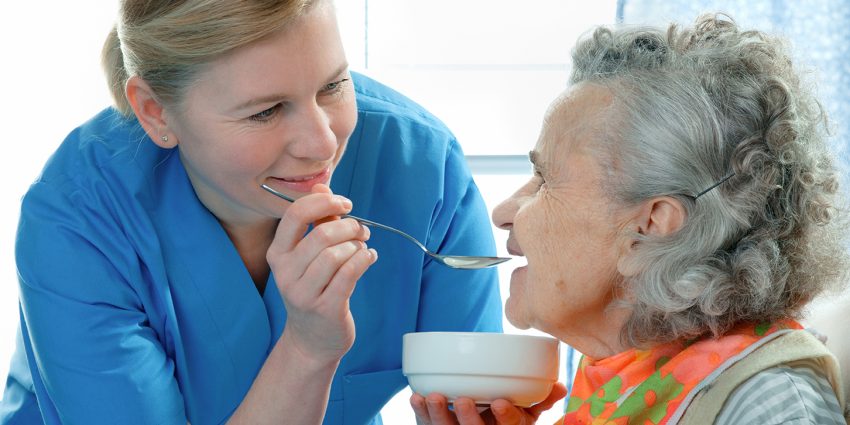Post Views: 6,382
ViewsBeating C.Diff: A Practical Guide
By INA Member Elaine P. Crigler, RN
“He dodged a bullet.” the doctor said with a smile as he was discharging my 83 year-old husband from 3 harrowing weeks in the Intensive Care unit of our small hospital on the coast of North Carolina. I smiled too, grateful for the good care provided and that Wayne would be going to rehab close by where my daughters and I would again be able to keep a daily vigil at his bedside.
Wayne had developed sudden septic shock and DIC (disseminated intravascular coagulation) four days after a successful prostate/bladder surgery. For a month prior to the surgery, he had an indwelling urinary catheter. He survived due to excellent ICU nurses, good doctors, massive antibiotics, and many prayers. After five weeks in the rehab facility, I brought him home. He was on Cipro, a broad-spectrum antibiotic, for a possible urinary tract infection (UTI).
One week after the Cipro ended he had the foulest smelling loose stools I’d ever encountered. Fifty years ago, when my children were young I had a kind, old-fashioned, local doctor, a Yale graduate, who told me that the bismuth in Pepto-Bismol removed toxins in the body. Based on that long-ago advice, I gave him two Pepto-Bismol tablets after each stool until he reached the maximum dose of sixteen a day.
The visiting nurse suggested he might have C.diff (Clostridium difficile) and took a sample into our local hospital to be tested. It came back “Negative.” For the next few days, his stools were normal.
Alarmed at the suggestion of C.diff, I went online to research it. According to the Mayo Clinic C.diff is a gram-positive bacterium somewhat common in human digestive systems that can flourish when the gut flora is killed during antibiotic therapy, leading to a super-infection and potential death. The intestines contain 100 billion bacterial cells and up to 2000 different kinds of bacteria, many of which are helpful in protecting the body from infection. Drugs, such as, antibiotics destroy some helpful bacteria, which can allow C.diff to grow out of control.
Half a million people get it every year. Most at-risk are seniors over 65 who have had abdominal or gastrointestinal surgery and heavy antibiotics. Ninety-four percent of C.diff infections are related to getting medical care. Forty percent begin in nursing homes and twenty-four percent in hospitals. It causes 14,000 deaths a year in the US.
The CDC (Center for Disease Control) guidelines offer six characteristics of C.diff but the two most important are not mentioned. These are the foul odor and pale, yellowish-green, jelly-like substance in the stool. Nurses have told me they could sometimes smell C.diff walking down nursing home hallways. Some places actually use sniffing dogs to detect it.
It is highly contagious. The spores passed from feces can spread to food surfaces and persist in a room for weeks. Luckily, I had already instituted a strict regimen of wearing latex gloves, using antiseptic wipes, and washing everything down with bleach, including bleach in the laundry. I placed a lined trash basket in the bathroom and bagged all the diapers, linens, and clothing before carrying it through the house to the laundry room.
Several days later the smelly stools returned. This time they were accompanied by a pale yellowish-green jelly-like substance. This was again taken for culture and the nurse told the technician we suspected C.diff.
“Oh,” the tech said. “You have to ask for that specifically or we don’t test for it.” Even the agency nurses were unaware of this. So the first culture was mistakenly negative. Our doctor prescribed ten days of Flagyl.
I could find no practical guide for treating this dreaded disease. So I began a daily regimen to replace the helpful bacteria in his gut by giving him Greek yogurt, containing five active live cultures, at least twice a day. I believe the yogurt (I used Chobani, a NY state manufacturer) is the key ingredient. It puts the good flora back into the gut, allowing the body to repair itself and return to normal homeostasis.
I also put him on a “BRAT” diet… Bananas, Rice, Applesauce, and Toast, and Tea, the standard for diarrhea. I made a big pot of rice and even gave it to him for breakfast with warm milk and sugar, along with a big dollop of yogurt. He had a daily banana. Our daughter gave us a good probiotic pill, which he took on an empty stomach, as recommended, every morning.
I put us on quarantine for three weeks, so no one visited. I did not want my daughter and her husband or our grandchildren to get it. I wouldn’t even let the UPS delivery girl come into the house.
My husband had one more day of diarrhea, which I again treated with Pepto-Bismol. I continued the yogurt and BRAT regimen also. It has been six months and the C.diff has not returned and no one else got it. I have heard horror stories about other cases of C.diff. It can cause months of relapsing and severe diarrhea. This regimen worked for us and I hope it will for others.
In summary:
- Pungent foul-smelling odor and gelatinous-like stools are the main characteristics.
- Be sure to write on the stool container: Check for C.diff.
- Institute a strict regimen of handwashing, wearing latex gloves, and bagging all the patient’s linens and clothing.
- Wash everything in bleach, wipe all surfaces with antiseptic wipes.
- Treat with Flagyl (or any other doctor’s order).
- Give a five live active culture Greek yogurt at least twice a day, Pepto-Bismol,(or other bismuth product), a probiotic, and a “BRAT” diet.
4 comments on Beating C.Diff: A Practical Guide
Leave a Reply
Beating C.Diff: A Practical Guide
By nurseadvisorofficial
“He dodged a bullet.” the doctor said with a smile. But it was only the beginning. Read on to learn more about this INA Member’s experience with C.Diff, and how her and her husband overcame it.














I found the article on on C.diff interesting. I developed C.diff Sepsis with a three week stay in ICU. It developed after taking Clindomycin. for a root canal. I went to Urgent care requesting a stool analysis, not realizing only certain places can do the test. My daughter, who is deaf, had an emergency C- section in another state. My doctor put me on Lomotil and Keflex before we left to go to her.
By the time we traveled to see her, and I went to Emergency Room, was 3 days. I went to the hospital where she delivered a healthy little girl. I was admitted with Hypovolemic Shock, Acute Renal Failure, Sepsis with Type A and B C.diff. They changed Dilaudid to Percocet resulting in an Anaphylactic Reaction. I called my nurse when my face and arms started swelling and i could not breath. Of course there was a delay d/t shift change. It progressed to Pulmonary Hypertension, bilateral atelectasis of both lungs, Pnuemonia, Congedtive Heart Failure. I refused bilateral chest tubes and ventilator. I had no DNR and wanted to live. I developed cysts in my liver and permanent damage to 3 heart valves. Upon discharge, still having pnuemonia and atelectasis, using a walker d/t immense muscle loss, I was told it returns in 30 per cent of the cases. It did two days later on the trip back home. I called my Gastroenterologist, was on Flagyl for 2 more months, live l. lactobacillus, and physical therapy for 6 months.
It was a nightmare at that time. My doctor told me, it is an awakening experience for a nurse to realize she can die too. I gave my superviser a report on my cases at my job from intensive care before the crash team worked on me. I was unable to return to nursing, and chose to take early retirement. I lived to enjoy the birth of 3 grandaughters that year, once health returned, and care for premi twins. I guess God had a plan, because I then cared for my 2 uncles, my mother who lived to 96, my dad on dialysis, and my spouse. The next year he had 2 heart surgeries, developed Parkinsons, and died this January after a 3 month hospital stay. I am still licensed as a RN in 2 states after 50 years. Now I educate others. I take Chobani yogurt daily, and pray the few times i have had to take antibiotics since, and do all I can to stay healthy. Thank you for sharing.
This is such a great article for caretakers or anyone who has to deal with c. diff!
I learned a lot about something I knew nothing about prior to reading this piece. Good job!
Article helpful in providing supportive measures.